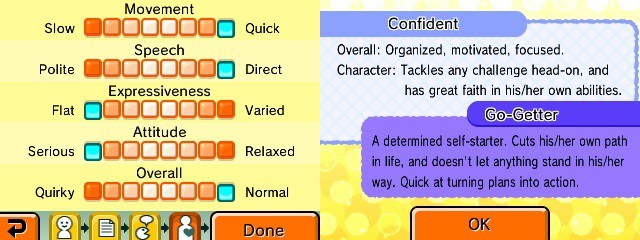Jul 03, 2018 Based off the game Tomodachi Life, first revealed on 14th March 2014. The front walls of the apartment disappear so you can see the area within when a fighter overlaps with the room. Based off Tomodachi Life You just wanted to wake up. This dream was weird, unlike any dream you had ever had before. But upon the realization that anyone can join you on this little island, do you really want to wake up? In the Japanese version, there's a dream called 'Familiar', which features the island from the original Tomodachi Collection and its original background music. In the Japanese version, dreaming Miis' speech bubbles display an icon with the kanji for yume (dream), while international releases feature a crescent moon.
- Tomodachi Life Rom
- Tomodachi Life Version Differences And Culture
- Tomodachi Life Version Differences And Difference
- Tomodachi Life Welcome Version Differences
Tomodachi Life Rom
Please contact us via Discord or Twitter if you experience any problems.
| Tomodachi Life |
|---|
Also known as: Tomodachi Collection: Shin Seikatsu (JP), Chingu Moa Apart (KR) This game has unused graphics. |
| This page is rather stubbly and could use some expansion. Are you a bad enough dude to rescue this article? |
Tomodachi Life is the quirky sequel to Nintendo's already weird take on the life simulation genre.
While it received two spiritual successors in the form of Miitomo and Miitopia, we still haven't gotten any news of another sequel on the Nintendo Switch.
- 2Unused Text
- 3Unused Music
- 4Unused Models
- 5Unused Graphics
Sub-Pages
Tomodachi Life Version Differences And Culture
| Regional Differences Localization can be a lengthy job. |
Unused Text
Enka Lyrics
Located in message/Song/Song_xx_LZ.bin/ArcBase (replace xx with EU_English or US_English depending of your version of the game) are lyrics for the Enka song, which was removed from all International releases of the game. It's unknown if there were ever any plans to localize the song for a broader audience or if these are placeholders.
| Japanese (used) | US_English | EU_English |
|---|---|---|
| ふられ わかれて | Reject and say goodbye | EU_English |
| あまざらし の | It's left out in rain | |
| おもいで | Can you | |
| どなたか | do it that | |
| けして ください | delete my memory | |
| やきついた あなた | You are branded on my heart | |
| あなた の かげ | Your dear feature | |
| なげた | The ring | |
| ゆびわ とわ に きゆ | which I threw never returns | |
| あめ の | In the rain | |
| くいなばし | Ku i na ba shi |
Unused Music
Enka
| This needs some investigation. Discuss ideas and findings on the talk page. Specifically: Rip the sequences. As of the time of writing, there are no tools capable of ripping .b*seq files. |
Located in sound/clone_sound.bcsar are the music sequences for the Enka song, which is exclusive to the Japanese version of the game. They're called BGM_SONG_ENKA_CLICK.bcseq and BGM_SONG_ENKA.bcseq.
Unused Models
TestCube
Located in model/sample_TestCube_LZ.bin is... How surprising, an untextured cube! Likely a leftover example from the SDK.
offscreen
In model/sample_DebugTextureRender_LZ.bin, this flat model with a weird texture applied over it can be found. Likely also from the SDK.
TestCube
offscreen
Unused Graphics
image256
An image of a line, used by sample_DebugTextureRender_LZ.bin.
Internal Project Name
The game's internal project name is 'clone', according to the sound/clone_sound.bcsar archive and many of the sound files contained within.
Revision Differences
| Please elaborate. Having more detail is always a good thing. Specifically: What was changed between versions 1.0 and 1.1? |
| To do: Document the demo versions. |
Version 1.1 was released as a day-one patch for the US and EU versions.

The Europe-exclusive version 2.0 ‒ released October 16, 2015 ‒ added the option to play the game in Dutch.
| The Tomodachi series | |
|---|---|
| Nintendo DS | Tomodachi Collection |
| Nintendo 3DS | Tomodachi Life |
| Related Games | |
| Nintendo 3DS | Miitopia |
| iOS/Android | Miitomo |

Tomodachi Collection
3DS
13 Trivia
In the International versions of the game, this was changed so that the effect becomes permanent when used. Because of this, the Kid-o-matic item was created exclusively for the international versions as a way to reverse the effects of the Age-o-matic. (and allowing adult Miis to become children)
Tomodachi Life Version Differences And Difference
The North American version of the game replaces this event with one called 'Rap Battle', in which two Miis try to insult each other in rhymes until one of them cannot come up with a rhyme.
The European versions not only contain the 'Rap Battle' event, but also an English version of the 'Shiritori' event called ' Word Chain', where instead of coming up with words that begins with the final kana of the previous word, two Miis have to come up with words that begin with the letter that the previous word ended with.
Tomodachi Life Welcome Version Differences
Gay marriages are able to be performed in Tomodachi Life due to the ability to create Miis that have the appearance of Miis of the opposite gender. While many have complained of the inability to have same gender relationships in Tomodachi Life, Nintendo has refrained from including the feature, explaining that the game is not to be looked at as though it is a 'simulation' of real life.